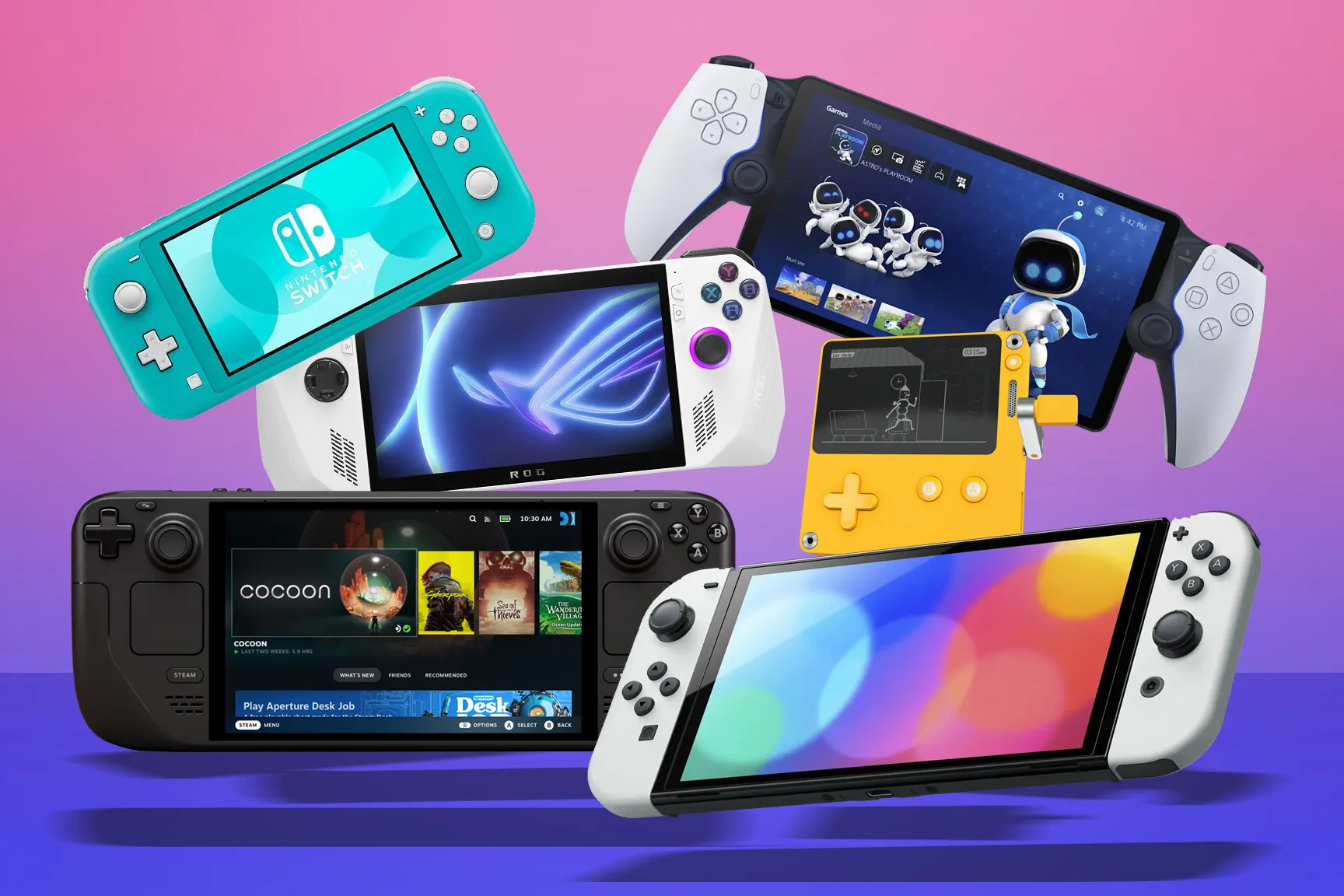
4. Asus ROG Ally
The ROG Ally is the first handheld to really give the Steam Deck a run for its money in terms of mainstream appeal. It wins hands down when talking straight specs, being considerably more powerful and with a higher resolution screen. The Ally will run any PC game you like, regardless of launcher – something not so simple on the Deck’s Linux-based OS.
It doesn’t have an OLED panel, but the Full HD resolution is clearly superior to the Deck’s, and the 120Hz variable refresh rate means you’re rarely bothered by unsightly screen tearing.
The ROG Ally can’t always run games at 1080p without performance taking a noticeable hit. Even when it can, the extra power saps battery life quickly; we struggled to play for longer than three hours. A bigger stumble is the Windows 11 operating system, which just isn’t designed for devices like this. But if you can live with some navigation awkwardness and strange incompatibility issues, the ROG Ally is an exciting handheld to play your PC games on.
5. Panic Playdate
The Playdate is very different from every other handheld console on this list. Rather than replicating the big-screen gaming experience on a portable device, its library consists exclusively of bespoke titles, most of them making use of its unique crank controller.
This is an intentionally low-tech toy. Its black and white display isn’t even backlit and the majority of its games are bite-sized experiences, best played for a few minutes at a time rather than a few hours.
It is, then, a decidedly more niche proposition than the Switch or Steam Deck. But if you like collecting beautiful objects, of which the cheerful yellow Playdate is undoubtedly one, and enjoy something a bit different from your handheld gaming, you can’t go wrong.
6. Lenovo Legion Go
The Lenovo Legion Go makes its case with an enormous and quite stunning 8.8in, 1600p, 144Hz display and Switch-esque detachable controllers. A novel FPS mode then turns one of them into a vertical mouse. It works well and definitely makes you feel more accurate than when playing with analogue sticks.
Like the ROG Ally you can run pretty much any game you like thanks to Windows. When it works you can have a lot of fun with Lenovo’s handheld, but we didn’t like the clunky Legion Space software. Most games can’t run well at the highest native resolution either. If they do, they’ll zap the battery dead in no time.
Still, if you’re a Game Pass subscriber you can turn the Legion Go into a portable Xbox with a great screen. That’s a major advantage over the Linux-based Steam Deck, which can only stream Xbox Game Pass via the cloud unless you go through the messy process of installing Windows.
7. Logitech G Cloud
This Android-based handheld comes with most of the major cloud gaming services (including Game Pass) pre-installed. It’s comfortable to hold and has a very decent 7in, 1080p display. But beyond the built-in controls, there isn’t a lot it can do that the phone likely sitting in your pocket right now can’t.
Whether you should buy one, then, depends on how much you already make use of apps like Xbox Cloud Gaming or Nvidia’s GeForce Now. There’s no doubt that playing Starfield is less fiddly on a dedicated gaming device than it is on your phone. If both your internet speeds and Wi-Fi strength are good enough, it can be pretty great. Plus the G Cloud is just an Android tablet at its heart, so you can download mobile games to play offline, too.
With servers in the cloud doing the heavy lifting, battery life is strong – up to 12 hours if you aren’t running many games natively. Some people will always be skeptical about cloud gaming, and there’s no denying that the G Cloud is an odd device – and not a cheap one either. But if you’re all in on game streaming this handheld ticks a lot of boxes.
8. PlayStation Portal
Sony has a long history with handheld consoles, but the PlayStation Portal is not another PSP or Vita. In fact, unless wirelessly connected to your PS5 it’s about as useful as a brick. The Portal streams games from your console, exactly as your phone does when using the PS Remote Play app (which is free). The difference here is that you get proper DualSense controls on either side of the 1080p 60fps display that you play your games on.
The PlayStation Portal is an unapologetically niche device, primarily aimed at PS5 players who regularly have to give up the TV to someone else in the house. If your home Wi-Fi isn’t fast enough you’re likely going to experience performance issues. That said, we really like playing PS5 games on that large and bright display, without having to give up the DualSense’s haptics and adaptive triggers. Battery life is surprisingly decent too.
As it isn’t really designed to be used outside the house and can’t do cloud streaming of any sort, the PS Portal is a slighter offering than a lot the devices on this list. But if you’re in the target market and your broadband is up to the job, it might just be the handheld you’re looking for.
How to choose the best handheld gaming console for you
As the above list attests to, the handheld console market is wide-ranging and varied, so Stuff is here to help you make the right choice based on your gaming habits.






